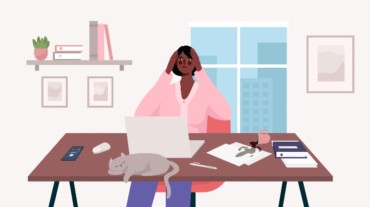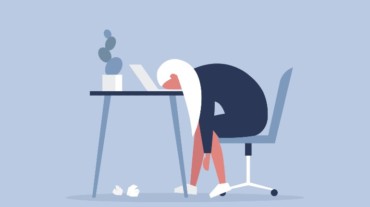
“I don’t even know why I am so exhausted. I just sat through some online meetings with my team and clients during the day. But I find myself utterly drained, snapping at everyone at home, and craving a nap… it’s so strange,” Keya* told me during our virtual session.
And she’s not alone. In the last month or so, all our lives have changed drastically to say the least and we are still grappling with this “new normal” which can seem strange, as Keya put it, and alien to us.
The shift to working from home and the increased use of technology to maintain human contact has started to reveal what we have always known to be true: the constant barrage of virtual interaction is taking a toll on the brain and leading to virtual or digital burnout.
Why are we at the brink of virtual burnout?
The essence of in-person human communication lies in verbal and non-verbal cues that paint a holistic picture for the brain to interpret and respond in accordance. Digital communication makes it that much harder for us to pick up those non-verbal cues.
However, virtual communication over a video call hinders this deep-rooted ability and requires much more sustained attention to verbal cues instead. Our posterior superior temporal sulcus and amygdala, which are part of ‘the social brain’ neural network and responsible for the interpretation of these cues, are on overdrive.
Additionally, having multiple people on the screen, all talking at the same time, doesn’t allow us to sustain our attention on any meaningful information–we are in a constant state of partial attentiveness and end up feeling drained.
This contributes to the perplexing exhaustion that Keya experienced and was unable to fathom as to why this was her experience despite having “just sat through meetings”. While it may simply be ‘sitting through’ for us, our brain is rushing to adapt which IS draining.

Prolonged hours of hunching over a laptop add to fatigue and our decreasing ability to sustain complete attention to a task drains our cognitive resources, which are already strained. Add to these minor issues like fluctuating Wi-Fi and constantly having to check if the other person can see or hear you contribute to the brain drain and irritation.
Also, Read: Are the overwhelming stresses of life making you burnout? Then, here’s help
So how can you cope with virtual burnout?
1. Prioritise: Not all meetings are “urgent” or necessary to attend. Be selective about the meetings you need to attend. Avoid scheduling continuous meetings even if it is easier for you to get it over with in one go. If we wouldn’t do that during in-person meetings, why are we doing it now? Our brains still need the same break in between, if not more.
Select Topics of your interest and let us customize your feed.
PERSONALISE NOW2. Keep your video off: If you are feeling overstimulated, turn your video off during the meeting and simply keep your audio on. This will give you a break from staring at the screen and help reduce the load on your brain’s ability to attend fully to the source of information.

3. Take measured breaks in between: If you have numerous meetings in a day, try and ensure that you take small, intentional breaks in between to give yourself a break from the stimulation. Movement breaks are especially important–not only does it help you feel less lethargic but it also gives you a brief change of scene (even if it means going from your bedroom to your living room!).
4. Really switch off: How many of us can truly say we have switched off from our work days? For many, it is easier than done–especially if you are not in a position to have the ability to decide that. However, it’s important to make it a point to cut off from work as much as is possible after the work day is over and truly have the opportunity to unwind.
For instance, you can let your clients know that any emails sent after a certain time will be attended to during the next working day. You can also have an honest conversation with your immediate boss about the work-life balance that you need.
This is an unusual time and we need to remember that we are not simply working from home. We are living through a pandemic and trying to work and we need to strike the balance that is healthy for us, individually.
*Names have been changed to protect confidentiality